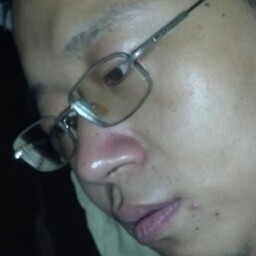Ning Guo Lin
age ~56
from Upland, CA
- Also known as:
-
- Ning Gou Lin
- Ning G Lin
- Ning Te Lin
- Ningguo Guo Lin
- Neville Lin
- Guo Ning Lin
- Ning Guo
- Lin Guo Ningguo
- Guo Lin Ningguo
- Lin Ning
Ning Lin Phones & Addresses
- Upland, CA
- Rancho Cucamonga, CA
- Gig Harbor, WA
- Azusa, CA
- Corona, CA
- Claremont, CA
- San Bernardino, CA
- Orange, CA
- Eastvale, CA
- Azusa, CA
Us Patents
-
Systems And Methods For Monitoring And Tracking Related U.s. Patent Applications
view source -
US Patent:20030149526, Aug 7, 2003
-
Filed:Dec 17, 2002
-
Appl. No.:10/169477
-
Inventors:Peter Zhou - Riverside CA, US
Dexing Pang - Riverside CA, US
Yiu-Cho Tong - Anaheim CA, US
Ning Lin - Anaheim CA, US
David Addington - Lake Elsinore CA, US
Rowena Albanna - Riverside CA, US
Amro Albanna - Riverside CA, US
Keith Bolton - Parkland FL, US -
International Classification:G01C021/26
-
US Classification:701/213000
-
Abstract:The present invention generally relates to systems, methods and applications utilizing the convergence of any combination of the following three technologies: wireless positioning or localization technology, wireless communications technology and sensor technology. In particular, certain embodiments of the present invention relate to a remote device that includes a sensor for determining or measuring a desired parameter, a receiver for receiving position data from the Global Positioning System (GPS) satellite system, a processor for determining whether or not alert conditions are present and a wireless transceiver for transmitting the measured parameter data and the position data to a central station, such as an application service provider (ASP). The ASP, in turn, may communicate the measured data, position data and notification of any alerts to an end user via an alert device. The present invention also relates to various applications and systems utilizing the capabilities of such a device.
-
Systems And Methods For Monitoring And Tracking
view source -
US Patent:20050250440, Nov 10, 2005
-
Filed:Oct 6, 2004
-
Appl. No.:10/959421
-
Inventors:Peter Zhou - Riverside CA, US
Dexing Pang - Riverside CA, US
Yiu-Cho Tong - Anaheim CA, US
Ning Lin - Anaheim CA, US
David Addington - Lake Elsinore CA, US
Rowena Albanna - Riverside CA, US
Amro Albanna - Riverside CA, US
Keith Bolton - Parkland FL, US -
International Classification:H04Q007/20
-
US Classification:455012100, 455456300, 455432300
-
Abstract:The present invention generally relates to systems, methods and applications utilizing the convergence of any combination of the following three technologies: wireless positioning or localization technology, wireless communications technology and sensor technology. In particular, certain embodiments of the present invention relate to a remote device that includes a sensor for determining or measuring a desired parameter, a receiver for receiving position data from the Global Positioning System (GPS) satellite system, a processor for determining whether or not alert conditions are present and a wireless transceiver for transmitting the measured parameter data and the position data to a central station, such as an application service provider (ASP). The ASP, in turn, may communicate the measured data, position data and notification of any alerts to an end user via an alert device. The present invention also relates to various applications and systems utilizing the capabilities of such a device.
-
Systems And Methods For Monitoring And Tracking
view source -
US Patent:20080186166, Aug 7, 2008
-
Filed:Jan 24, 2008
-
Appl. No.:12/019313
-
Inventors:Peter Y. Zhou - Riverside CA, US
Dexing Pang - Riverside CA, US
Yiu-Cho Alan Tong - Anaheim CA, US
Ning Lin - Anaheim CA, US
David Ralph Addington - Lake Elsinore CA, US
Rowena Lampa Albanna - Riverside CA, US
Amro Albanna - Riverside CA, US
Keith L. Bolton - Parkland FL, US -
International Classification:G08B 29/00
H04Q 7/00
H04B 7/185 -
US Classification:34053913, 340506, 34235707
-
Abstract:The present invention generally relates to systems, methods and applications utilizing the convergence of any combination of the following three technologies: wireless positioning or localization technology, wireless communications technology and sensor technology. In particular, certain embodiments of the present invention relate to a remote device that includes a sensor for determining or measuring a desired parameter, a receiver for receiving position data from the Global Positioning System (GPS) satellite system, a processor for determining whether or not alert conditions are present and a wireless transceiver for transmitting the measured parameter data and the position data to a central station, such as an application service provider (ASP). The ASP, in turn, may communicate the measured data, position data and notification of any alerts to an end user via an alert device. The present invention also relates to various applications and systems utilizing the capabilities of such a device.
-
Low Latency Cacheable Media Streaming
view source -
US Patent:20110080940, Apr 7, 2011
-
Filed:Nov 3, 2009
-
Appl. No.:12/611133
-
Inventors:John A. Bocharov - Seattle WA, US
Krishna Prakash Duggaraju - Renton WA, US
Lin Liu - Sammamish WA, US
Jack E. Freelander - Monroe WA, US
Ning Lin - Redmond WA, US
Anirban Roy - Kirkland WA, US -
Assignee:Microsoft Corporation - Redmond WA
-
International Classification:H04N 11/04
G06F 15/16 -
US Classification:37524001, 709231, 375E07001
-
Abstract:A low latency streaming system provides a stateless protocol between a client and server with reduced latency. The server embeds incremental information in media fragments that eliminates the usage of a typical control channel. In addition, the server provides uniform media fragment responses to media fragment requests, thereby allowing existing Internet cache infrastructure to cache streaming media data. Each fragment has a distinguished Uniform Resource Locator (URL) that allows the fragment to be identified and cached by both Internet cache servers and the client's browser cache. The system reduces latency using various techniques, such as sending fragments that contain less than a full group of pictures (GOP), encoding media without dependencies on subsequent frames, and by allowing clients to request subsequent frames with only information about previous frames.
-
Byte Range Caching
view source -
US Patent:20180160193, Jun 7, 2018
-
Filed:Oct 11, 2017
-
Appl. No.:15/730301
-
Inventors:- Redmond WA, US
Anil K. Ruia - Issaquah WA, US
Himanshu Patel - Redmond WA, US
Ning Lin - Redmond WA, US
Chittaranjan Pattekar - Bothell WA, US -
International Classification:H04N 21/643
H04N 21/61
H04N 21/231
H04L 29/08
H04L 29/06 -
Abstract:A caching system segments content into multiple, individually cacheable chunks cached by a cache server that caches partial content and serves byte range requests with low latency and fewer duplicate requests to an origin server. The system receives a request from a client for a byte range of a content resource. The system determines the chunks overlapped by the specified byte range and sends a byte range request to the origin server for the overlapped chunks not already stored in a cache. The system stores the bytes of received responses as chunks in the cache and responds to the received request using the chunks stored in the cache. The system serves subsequent requests that overlap with previously requested ranges of bytes from the already retrieved chunks in the cache and makes requests to the origin server only for those chunks that a client has not previously requested.
Medicine Doctors

Ning Lin
view sourceSpecialties:
Ophthalmology
Work:
Sante Community PhysiciansEye & Vision Of Central California
2325 W Cleveland Ave STE 103, Madera, CA 93637
(559)6744700 (phone)
2325 W Cleveland Ave STE 103, Madera, CA 93637
(559)6744700 (phone)
Education:
Medical School
Sun Yat Sen Univ of Med Sci, Guangzhou, China (242 21 Pr 1/71)
Graduated: 1982
Sun Yat Sen Univ of Med Sci, Guangzhou, China (242 21 Pr 1/71)
Graduated: 1982
Procedures:
Corneal Surgery
Destruction of Lesion of Retina and Choroid
Eyeglass Fitting
Lens and Cataract Procedures
Ophthalmological Exam
Destruction of Lesion of Retina and Choroid
Eyeglass Fitting
Lens and Cataract Procedures
Ophthalmological Exam
Conditions:
Acute Conjunctivitis
Cataract
Diabetic Retinopathy
Glaucoma
Keratitis
Cataract
Diabetic Retinopathy
Glaucoma
Keratitis
Languages:
English
Spanish
Spanish
Description:
Dr. Lin graduated from the Sun Yat Sen Univ of Med Sci, Guangzhou, China (242 21 Pr 1/71) in 1982. He works in Madera, CA and specializes in Ophthalmology. Dr. Lin is affiliated with Saint Agnes Medical Center.

Ning Lin
view sourceSpecialties:
Surgery , Neurological
Work:
NewYork Presbyterian/Queens Medical Group Neurology Surgery
5620 Main St STE 300, Flushing, NY 11355
(718)6701837 (phone), (718)6617186 (fax)
5620 Main St STE 300, Flushing, NY 11355
(718)6701837 (phone), (718)6617186 (fax)
Languages:
English
Spanish
Spanish
Description:
Dr. Lin works in Flushing, NY and specializes in Surgery , Neurological.
Name / Title
Company / Classification
Phones & Addresses
President
Powermax Battery USA Inc
Consumer Goods · Whol Electrical Equipment · Electrical Apparatus and Equipment
Consumer Goods · Whol Electrical Equipment · Electrical Apparatus and Equipment
11750 Jersey Blvd, Rancho Cucamonga, CA 91730
(909)9452111
(909)9452111
President
SUCCEED GROUP, INC
PO Box 4326, Diamond Bar, CA 91765
Resumes

Ning Lin
view sourceWork:
Kk
Dd
Dd

Dd At Kk
view sourcePosition:
dd at kk
Location:
United States
Industry:
Consumer Services
Work:
kk
dd
dd
Myspace
Plaxo

ning lin
view sourcelaypaw
Youtube

Janny Ning Lin
view source
Ji Ning Lin
view source
Ning Lin
view source
Tun Ning Lin
view source
Ning Lin
view source
Shu Ning Lin
view source
Ning Wu Lin
view source
Ah Ning Lin
view sourceGoogleplus

Ning Lin
Education:
University of Southern California - Applied math

Ning Lin

Ning Lin

Ning Lin

Ning Lin

Ning Lin

Ning Lin

Ning Lin
Classmates

Elaine Yeun Ning Lin | Sh...
view source
Ning Lin | Pacific Univer...
view source
Shanghai American School,...
view sourceGraduates:
Elaine Yeun Ning Lin (2001-2004),
Dennis Sun (2000-2006),
Jil Krusemann (2002-2006),
Jing Yi Huang (1992-1993)
Dennis Sun (2000-2006),
Jil Krusemann (2002-2006),
Jing Yi Huang (1992-1993)
News

Climate scientists say we should expect more wildfires and flooding (+video)
view source- in what is known as storm surge. The power of a storm and the baseline sea level are the main factors in how high that flood rises, study lead author Ning Lin,an assistant professor of Civil and Environmental Engineering at Princeton University, explains in a phone interview with the Monitor.
- Date: Oct 11, 2016
- Category: Sci/Tech
- Source: Google

Researchers predict growing number of Hurricane Sandy-like storm surges
view source- "To effectively prepare for future hurricanes, we need to know what coastal cities will be facing in the coming decades, but past models have not accounted for all of the significant dynamic factors involved in predicting surge floods," said Ning Lin, the lead author of the paper and a Princeton ass
- Date: Oct 10, 2016
- Category: Sci/Tech
- Source: Google

New York City at risk of flooding every two decades: climate study
view source- It was the first to make projections by accounting for how climate change could contribute to rising seas and hurricane activity, said Ning Lin, the study's lead author and an assistant professor at Princeton University in New Jersey.
- Date: Oct 10, 2016
- Category: Sci/Tech
- Source: Google

In All Probability: Climate Change and the Risk of More Storms Like Sandy
view source- "This is not just coincidence," Ning Lin, the paper's lead author and assistant professor of civil and environmental engineering at Princeton University, told me. "We knew that New York City was vulnerable."
- Date: Nov 19, 2012
- Category: Sci/Tech
- Source: Google

Predicting a hurricane's landfall and location
view source- 21 might now occur in New York every three to 20 years rather than once every 100 years as once thought. Oppenheimer and civil and environmental engineering professor Ning Lin GS 10 co-developed a statistical simulation to demonstrate that these storms could drive floods higher than 9 feet. In lowe
- Date: Nov 08, 2012
- Source: Google

Hurricane Sandy: A Glimpse at New York's Scary Storm Future
view source- Sandys storm tide was comparable to that caused by a 1,000-year hurricane, Ning Lin, lead study researcher and assistant professor at Princeton, told LiveScience. However, she pointed out, Sandy was more than a hurricane.
- Date: Nov 02, 2012
- Category: Sci/Tech
- Source: Google

New York Taxis as Empty as Streets as Sandy Shuts City
view source- A 3-meter storm surge at the Battery in Manhattan mightcause between $5.65 billion and $11.55 billion in damage,according to Ning Lin, professor of civil and environmentalEngineering at Princeton University in New Jersey. She said anywind and rain damage arent included in the estimate.
- Date: Oct 30, 2012
- Source: Google
Get Report for Ning Guo Lin from Upland, CA, age ~56





